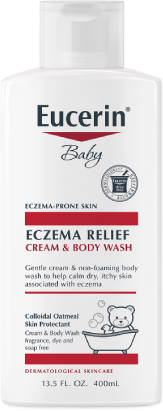
Eucerin® Baby Eczema Relief Cream& Body Wash
- Soap-free, non-foaming, non-drying, non-irritating
- Low pH formula with ceramide and colloidal oatmeal (skin protectant) to help protect and soothe skin during bathing

Eucerin® Baby Eczema Relief Cream
- Clinically proven to help relieve itch and fortify eczema-prone skin
- Formulated with ceramide, colloidal oatmeal (skin protectant), and licorice root extract for use in children as young as 3 months
- 4 out of 5 children remained
flare-free for 6 months with daily use 1
Reference: 1. Weber TM, Samarin F, Babcock MJ, Filbry A, Rippke F. Steroid-free over-the-counter eczema skin care formulations reduce risk of flare, prolong time to flare, and reduce eczema symptoms in pediatric subjects with atopic dermatitis. J Drugs Dermatol. 2015;14(5):478-485.
Treatment Goals
Treatment goals for eczema
Your child’s pediatrician will review the treatment goals for their specific
- Reducing the frequency and number of flares
- Relieving symptoms (redness, dryness, itching, irritation)
- Identifying and managing triggers
- Using products that are
pH-optimized to skin - Improving hydration and maintaining moisture of the skin
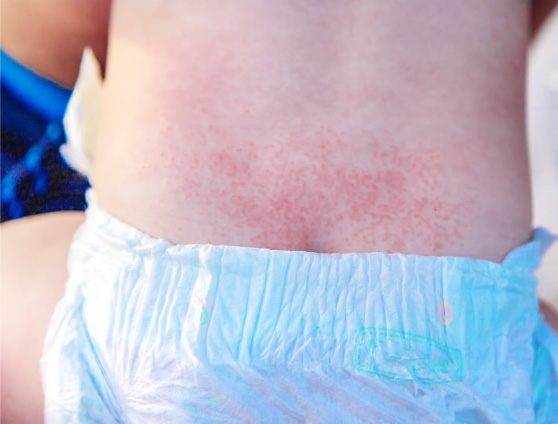

QUESTIONS TO ASK
Questions for the pediatrician
- My child is still having flares. What can we do to reduce them?
- What can help their itching/irritation?
- What moisturizer should they use to treat their dry skin?
- How can I identify and help eliminate or reduce their triggers?
- Can you help me understand why skin pH is important for people with eczema?
pH AND ECZEMA
Skin pH and its impact on eczema-prone skin
Skin of eczema patients has a higher pH (is less acidic) than healthy skin.
An acidic skin pH can help your child's skin support a healthy skin moisture barrier and resist the growth of harmful bacteria.
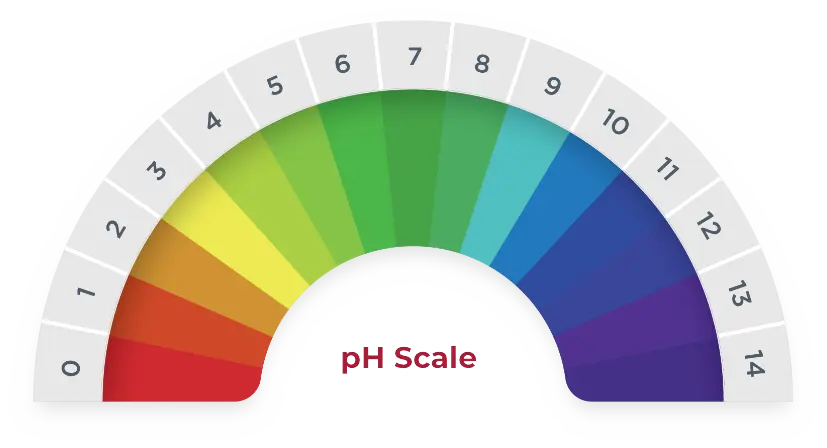
Healthy Habits
Healthy habits to pHortify your eczema-prone skin Changing your bathing routine can help lower your skin’s pH
- Typical bar soap can have a pH of
9-10 . Washing with alkaline bar soap can raise the pH of skin, lasting for more than an hour
Changing your bathing routine can help lower your skin’s pH
- Typical bar soap can have a pH of
9-10 . Washing with alkaline bar soap can raise the pH of skin, lasting for more than an hour
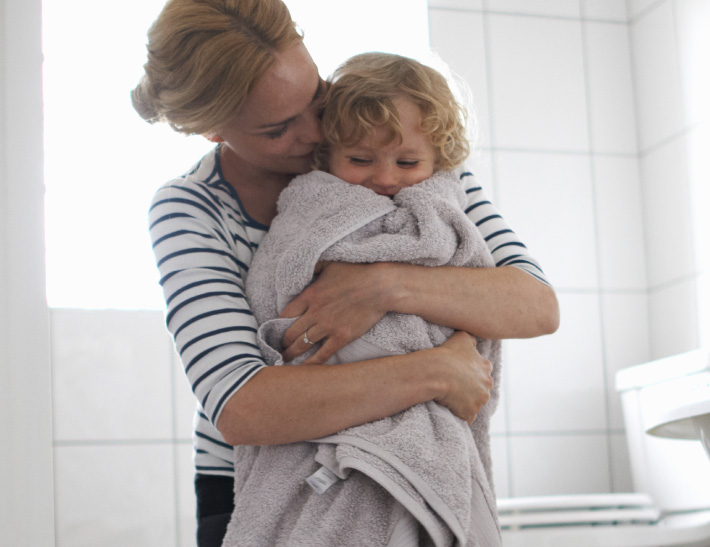
Things to do:
Limit bath time to 5-10 minutes using warm (not hot) water at least once a day
Use products formulated for sensitive skin (low pH, no fragrances, no dyes)
Moisturize every day to help keep developing, eczema-prone skin hydrated and healthy-looking
Identify your child’s triggers: allergens, climate, external irritants, scratching, or a genetic predisposition.
THINGS TO AVOID:
Harsh chemicals in cleansers, soaps, sanitizers, and detergents
Abrasive, synthetic fabrics and scratchy wool
Exposing your child to secondhand smoke
Don’t exacerbate your child’s eczema. Reduce their opportunity to scratch by trimming their nails or having them sleep in cotton gloves.
The skin's surface has a protective layer called the acid mantle
This protective barrier:
- Helps the skin maintain its moisture
- Acts as a barrier to harmful bacteria and other elements that may penetrate the skin
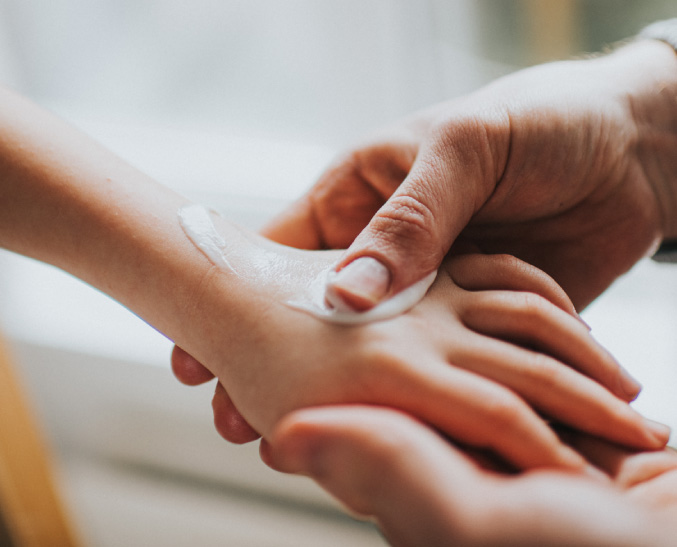
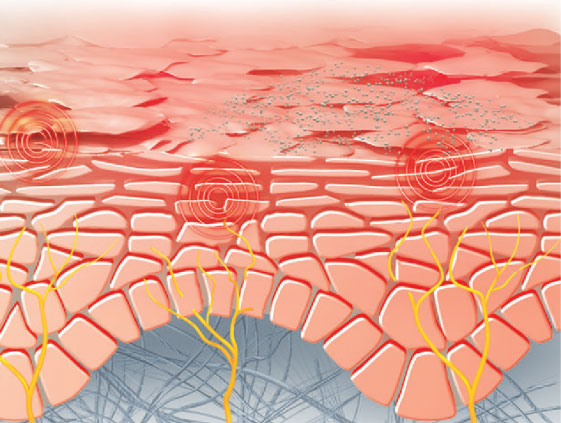
Eczema-prone skin has a damaged skin barrier that can flare and result in a red, scaly, itchy rash
A damaged protective acid mantle can allow harmful bacteria and other elements to enter the damaged skin. It is more difficult to keep the skin moisturized.
